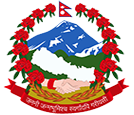District Soil Conservation Office Baglung
Soil and water are the principle natural resources of Nepal. Majority of the people in the country derive their livelihoods from agricultural activities. These activities directly depend upon watershed resource base - the land, water and forest. Natural phenomenon such as fragile mountains, sloppy terrain and heavy rainfall during monsoon cause soil erosion and watershed degradation in Nepal. However, these are more accelerated due to human activities such as improper land use, unscientific farming practices, haphazard construction of development infrastructures and deforestation. Due to the soil erosion, top or fertile soil from upper watershed is washed up and fertile land of lower watershed covers with sediments. The implications of such erosion and degradation are loss of fertility, loss of production, drying up water sources and increase poverty. Therefore, the fragile natural environment of the country has been under serious threat, and the increasing trends of soil erosion and landslides, floods and sedimentation to the major river system are indicators of watershed degradation in Nepal.
The related problems of soil erosion and watershed degradation are the greatest stumbling block for the development of Nepal. They obstruct the aspiration of the government and the people. Unless appropriate measures are taken to resolve them the country could suffer a great economic and environmental crisis. Realizing this fact, Nepal started to implement soil conservation and watershed management (SCWM) programmes in a few watersheds since 1967. It became institutionalized after the establishment of the Department of Soil Conservation and Watershed Management (DSCWM) under the Ministry of Forests and Soil Conservation in 1974. Since then the Department through its district offices has providing soil conservation and watershed management services in various parts of the country.
At present DSCWM has providing soil conservation and watershed management services to 61 districts through its District Soil Conservation Offices ((DSCO). Under the present approach followed by the Department, each district is divided into a number of sub-watersheds which are prioritized on the basis of level of land degradation and population pressure. SCWM activities are then implemented in the most critical sub-watershed. SCWM includes sub programmes such as land use planning, land productivity conservation, protection of development infrastructures, natural hazard prevention and user group mobilization and empowerment. The programme integrates various conservation and production oriented activities while building the capacity of the local people to manage the watershed resources in a sustainable manner.
This activity profile is a documentation of activities carried out by DSCO Baglung during F.Y. 2073/74.I would like to thank all user groups, stakeholders and staffs who contributed direct
and indirectly to accomplish all these activities during this financial year.
Thank you all.
Sher Bahadur Shrestha,
District Soil Conservation Officer
District Soil Conservation Office, Baglung






